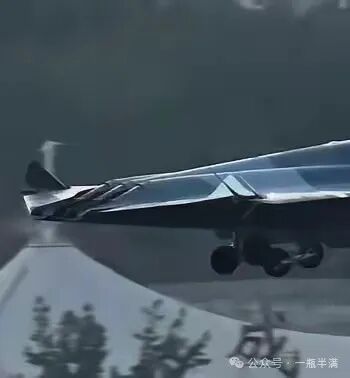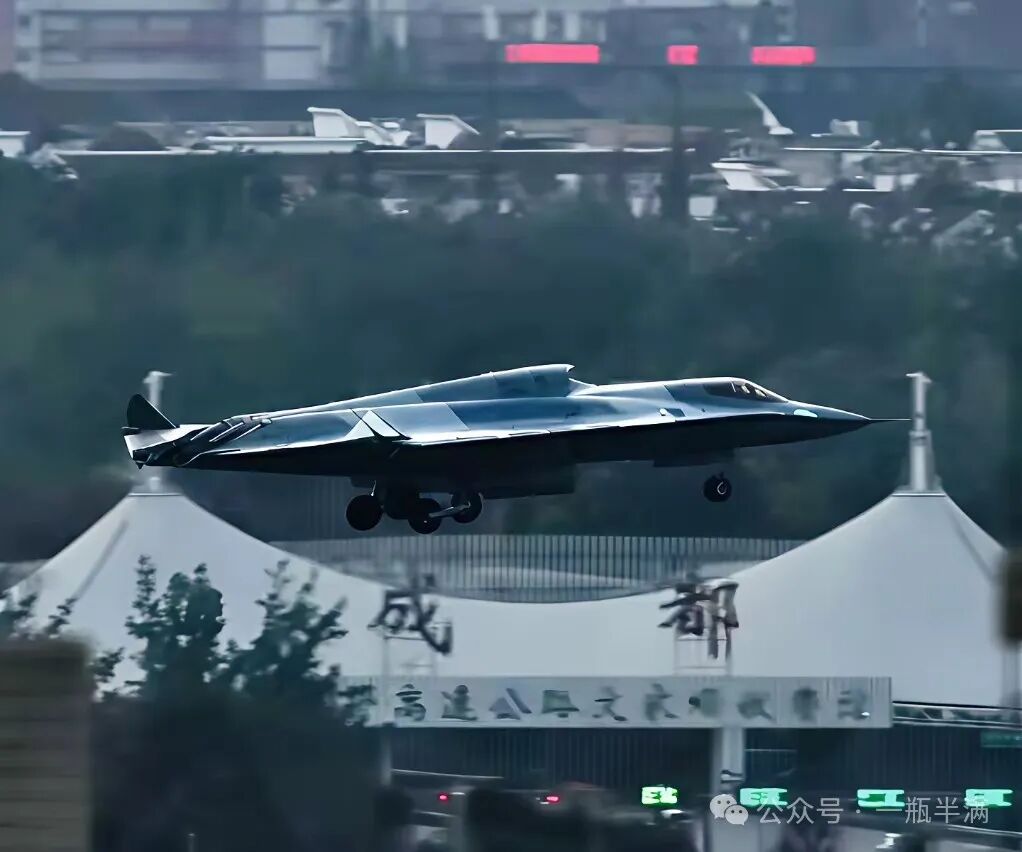High-definition test flight images of the Ginkgo Leaf have been captured again!

Since March 2025, the test flight frequency of the Ginkgo Leaf and the Shenyang Sixth Generation Fighter has increased, with various angles of test flight images appearing online. Based on the test flight images that have emerged, the basic information of the Ginkgo Leaf can be confirmed: two sets of four pairs of split-type control surfaces, six flaps or ailerons; a DSI inlet on the back, and two side-mounted air intakes; the nose is equipped with an EOTS infrared detection system, as well as a three-dimensional array active phased array radar; and it features a design with three aircraft engines.
The most surprising aspect is that the shape characteristics of the three aircraft engine nozzles are the same, but the air intakes are different. The latest test flight images reveal that the upper nozzles of the three aircraft engines on the Ginkgo Leaf can be deflected up and down. There is a noticeable gap at the junction between the nozzle and the airframe; if it were not to allow for the deflection of the nozzle, there would be no particular purpose for this gap. After all, the existence of this gap would inevitably increase the rear radar cross-section.
From this perspective, the upper part of the three aircraft engine nozzles on the Ginkgo Leaf can indeed be deflected up and down. As for whether the lower part can also be deflected, it is currently uncertain. However, it has adopted a split design, separating the three nozzles rather than designing the bottom as a unified structure. The test flight images clearly show that the lower part of the three aircraft engine nozzles on the Ginkgo Leaf is part of the airframe and will not deflect. This raises the question: if only the upper nozzles can deflect, what is their purpose?
A clear example is the YF-23 fighter jet, whose engine nozzle design is quite similar to that of the Ginkgo Leaf; its upper nozzle can deflect while the lower part remains fixed. The advantage of this design is that during pitch control, the deflection of the upper nozzle can change the thrust vector, which can also help balance the Ginkgo Leaf during supersonic flight, especially since it lacks canards and a horizontal tail.
The fixed lower part, integrated with the airframe, can also enhance radar and infrared stealth. After all, the Shenyang Sixth Generation Fighter employs a two-dimensional vector nozzle, and there is no issue with the Ginkgo Leaf using one as well. This means that the Ginkgo Leaf’s pitch control has an additional direct force provided by the vector nozzle. However, the lower nozzle cannot deflect, and can only provide direct force control when the Ginkgo Leaf is climbing or flying at a high angle of attack. Of course, this could also be due to the vertical distance difference formed between the engine nozzle and the airframe, rather than a gap left for nozzle deflection.
However, if it were not a vector nozzle, it could be designed to fully integrate with the airframe like the B-2A, achieving even better stealth than current designs. Therefore, it can be concluded that the Ginkgo Leaf’s aircraft engines also utilize vector nozzles. As for the current aircraft engines, they are essentially consistent with those of the Shenyang Sixth Generation Fighter, both being the WS-10 series equipped with new engines featuring two-dimensional vector nozzles.

(Image source: Internet, please delete if infringing)